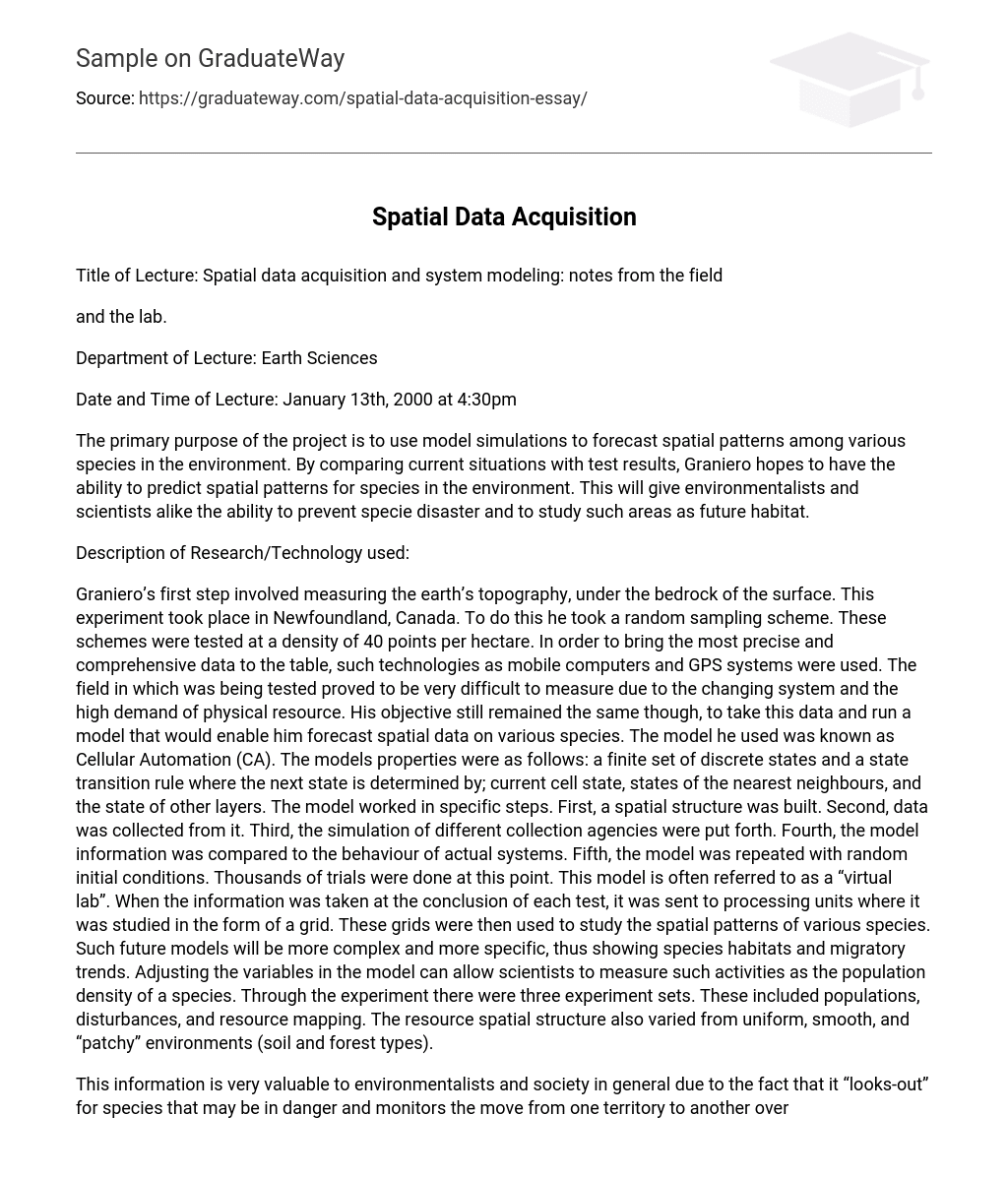The main goal of the project is to forecast spatial patterns among different species in the environment using model simulations. By comparing present situations with test outcomes, Graniero aims to predict spatial patterns for species in the environment. This will enable environmentalists and scientists to prevent species disasters and study future habitats.
Graniero conducted his initial measurement of the earth’s topography below the surface in Newfoundland, Canada. To accomplish this, he employed a random sampling scheme with a density of 40 points per hectare. To ensure accuracy and comprehensive data, Graniero utilized advanced technologies such as mobile computers and GPS systems.
The test field was challenging to measure due to the evolving system and the high need for physical resources. Nevertheless, the goal remained unchanged – to use this data to create a model that would predict spatial data for different species. The model employed was called Cellular Automation (CA). The model’s characteristics included a finite set of discrete states and a rule determining state transitions, taking into account the current state of the cell, states of neighboring cells, and the state of other layers.
The model followed a series of steps. Firstly, a spatial structure was constructed. Then, data was gathered from it. Next, simulations of different collection agencies were introduced. After that, the model’s information was compared to the behavior of real systems. Following this, the model was repeated with random initial conditions, conducting thousands of trials. This model is commonly known as a “virtual lab”. At the end of each test, the collected information was sent to processing units for analysis in a grid format. These grids were subsequently utilized to examine the spatial patterns of different species.
Future models will become more intricate and specialized, illustrating the habitats and migration patterns of species. By manipulating the variables in the model, scientists can quantify activities like species population density. The experiment encompassed three sets: populations, disturbances, and resource mapping. Additionally, the spatial structure of resources differed across uniform, smooth, and “patchy” environments (soil and forest types).
This information is of great importance to both environmentalists and society as a whole. It serves the purpose of monitoring endangered species and tracking their movements between territories within a specific timeframe. By employing such models, scientists are able to anticipate the habitat and population density of species in particular regions. This awareness helps ensure the conservation of species and safeguards against human disturbance in their natural habitat.
To summarize, the model is highly beneficial and as it evolves and gains complexity, it will become an invaluable asset for environmental scientists.





